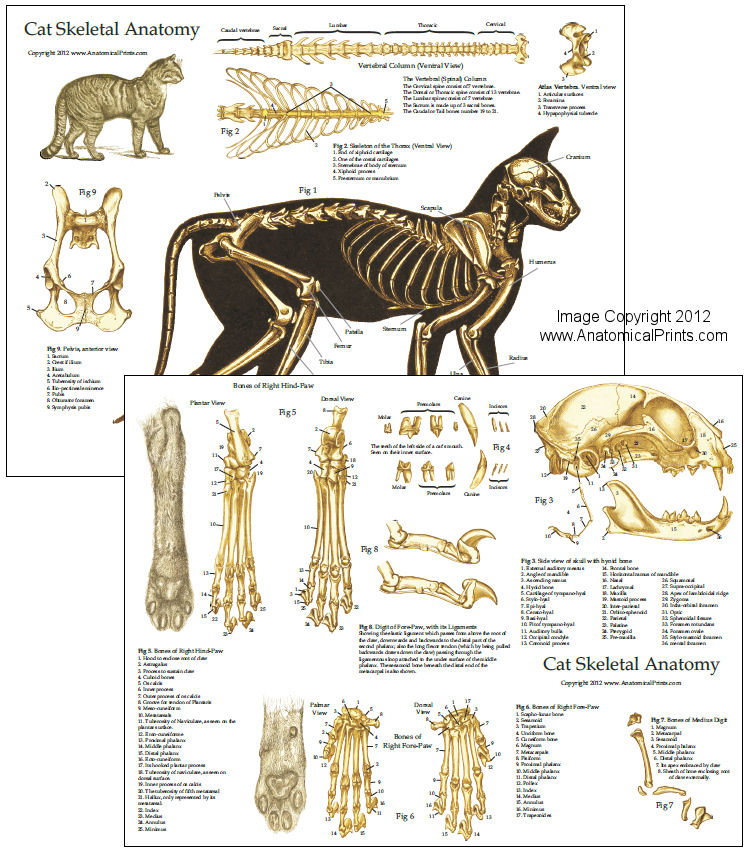
Skeletal Anatomy of the Domestic Cat Chart
The skeleton is the internal framework of your cat's body consisting of the bones, ligaments, and tendons. It can be broken up into sections known as axial, visceral and appendicular. The axial skeleton consists of the head, vertebrae, ribs, and sternum.

The Cat Skeleton What Makes Them So Special?
01 Every aspect of your cat's anatomy is fine-tuned for their status as predatory animals. 02 Cats have powerful senses of smell and hearing, making them keenly aware of their environment. 03 Your cat's facial expressions, from whiskers to ears to eyes, can tell you how they're feeling.

Domestic House Cat Skeleton Photograph by Millard H. Sharp Pixels
Big and Bendy. •••. Although humans are much larger, a cat has roughly 250 bones in its skeleton, compared to the 206 bones of the human skeleton. The extra bones in the cat's skeleton are found mainly in the backbone, which gives the cat its extra flexibility and agility. A cat has 52 or 53 vertebrae; humans have 32 to 34.

Cat Skeleton Stock Photos, Pictures & RoyaltyFree Images iStock
You may be surprised to learn that your cat's teeth are made up of three unique substances: pulp - in the centre of the tooth, this contains cells, nerves and blood vessels; dentine - this covers the pulp; enamel - this is the protection for your cat's teeth, it covers the crown and prevents teeth from becoming too sensitive.

Cat Skeleton Anatomy Poster Clinical Charts and Supplies
Cats are generally nocturnal in habit. Their large eyes are especially adapted for seeing at night. The retina has a layer of guanine called the tapetum lucidum, which reflects light and causes the eyes to shine at night when illuminated.Cats have good senses of sight and hearing, but their sense of smell is not as developed as that of the canids, a fact suggested by the cat's short snout.

Cat Skeletal Anatomy by JacquelineRae on DeviantArt Cat anatomy, Cat skeleton, Animal skeletons
Cats represent the most supremely efficient muscular machines in their ability to jump, twist, and turn. The ratio of their strength to their size is far superior to humans.

Specimen of the Week 391 The Domestic Cat Skeleton UCL UCL Culture Blog
A sphenoid bone of a cat skull anatomy Basisphenoid part Wing of the cat's sphenoid bone Pterygoid process of the sphenoid A presphenoid bone of a cat The ethmoid bone of a cat Facial bones of the domestic cat skull anatomy Maxilla bone of a cat skull (paired) Premaxilla bone of a cat (paired) Lacrimal bone of a cat (paried)

Cat Skeleton Do You Know how it Looks Like? Dogalize
The 10 Cat Anatomy Facts 1. Purpose of the Purr It can be easy to dismiss the sound of your cat's purr as a simple sign of his contentment, but the truth is much more complex. While cats do.

Cat anatomy Wikipedia
Cat Anatomy 101: Understanding the Feline Body By Adam Mann Last updated: Oct 02 2023 Vet approved Reviewed & Fact-Checked By Dr. Paola Cuevas Veterinarian, MVZ The information is current and up-to-date in accordance with the latest veterinarian research. Learn more »
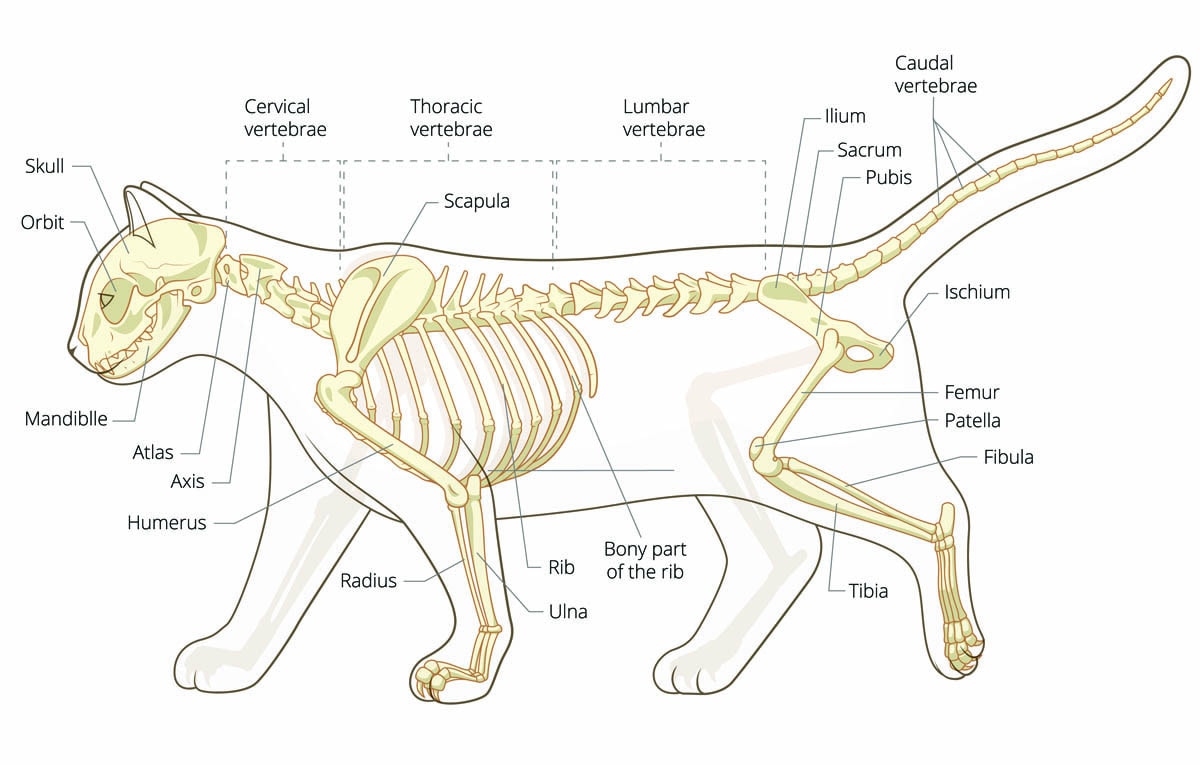
Bones of the CatAll About The Cat's Skeleton CatWorld
Cat Anatomy A cats skeleton is very similar to that of a human being, however it does lack the shoulder blade bones. This allows freedom of movement of the foreleg, which can be turned in almost any direction.

Cat Skeleton Domestic Cat Skeleton (Felis catus) in 2019 Animal skeletons, Photography
Lateral view of the cat skeleton. CC-BY Sisina Macchiarelli & Daniel Saugar. Contributors and Attributions. Lateral view of the cat skeleton.. Authored by: Sisina Machiarelli & Daniel Saugar. License: CC BY: Attribution; 2.8: Cat skeleton- overview is shared under a CC BY 4.0 license and was authored, remixed, and/or curated by LibreTexts.
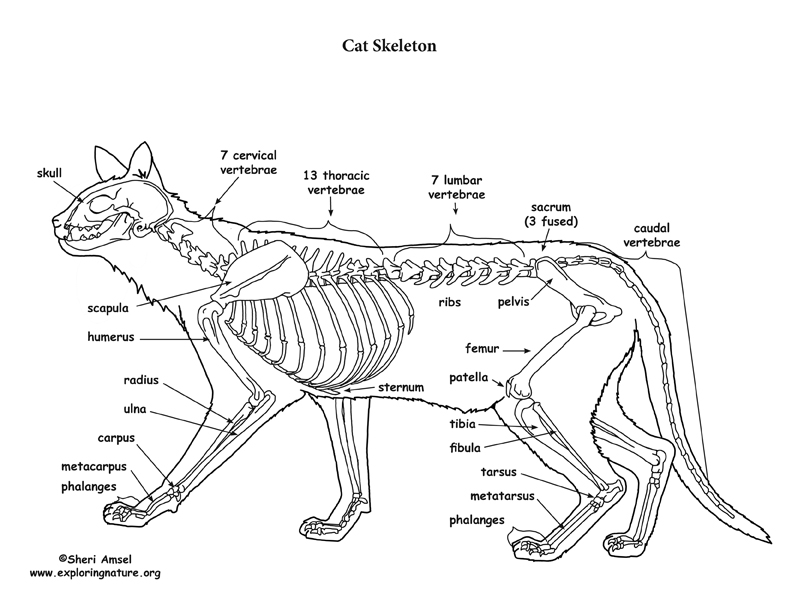
Cat Skeletal Anatomy
The cat tail skeleton is basically an extension of the cat's spine, and the cat tail bones contain more vertebrae, called "caudal vertebrae". So how many bones are in a cat tail on average? Well, a typical house cat skeleton has 18 to 23 caudal vertebrae, so this again means that our number of 245 bones is in trouble!
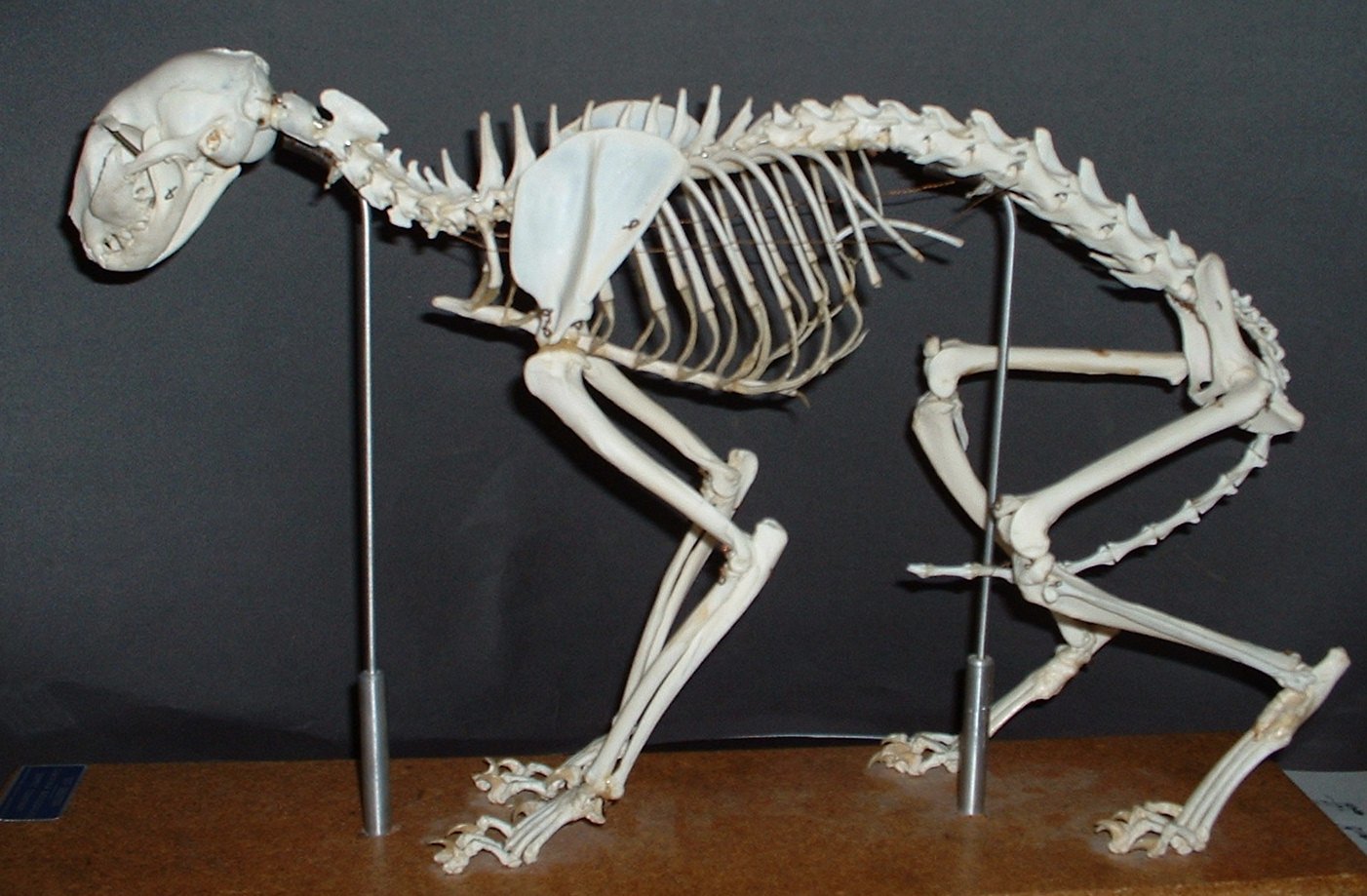
Links to Pictures on the Physiology of Cats
Interactive clip of the full body cat available on the Anatomage Table. Table users can visualize and virtually dissect real cat anatomy. Learn more at http:.
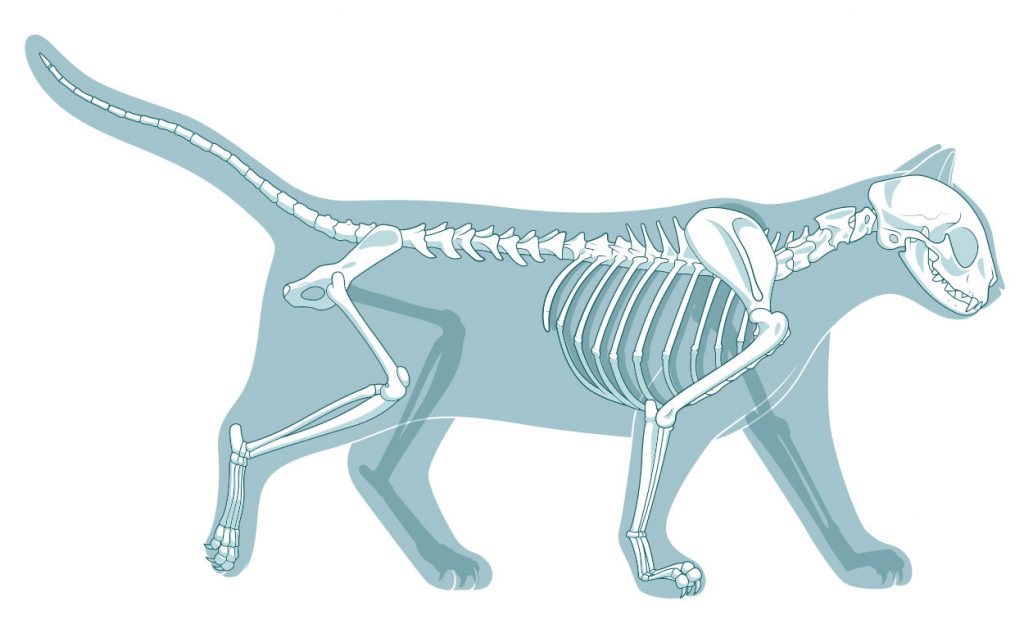
Cat Skeleton How Many Bones Does A Cat Have?
The cat has 230 bones, as opposed to 206 within the human body. Skeleton. The skeleton consists of 5 major areas: Spine - cervical, thoracic, lumbar, sacral, caudal regions; Skull; Ribs; Forelimbs; Hindlimbs; When cats experience a musculosketal injury, they are less likely to walk and prefer to hide in a corner or under a bed.

Anatomy of a cat skeletal system design 1337897 Vector Art at Vecteezy
The skeleton is composed of the hard tissues of the body, and its primary functions are to support the body, to provide a system of levers used in locomotion, to protect the soft organs of the body, and to produce red blood cells (hematopoiesis). The cat skeleton has an average of 250 bones.

Skeleton Cat
The 9 Basics of Cat Anatomy. 1. Whiskers. Whiskers erupt from hair follicles but, unlike regular hairs, don't cover a cat's entire body. Instead, they are strategically located in places like the chin, above the eyes, and on the back of their front legs.